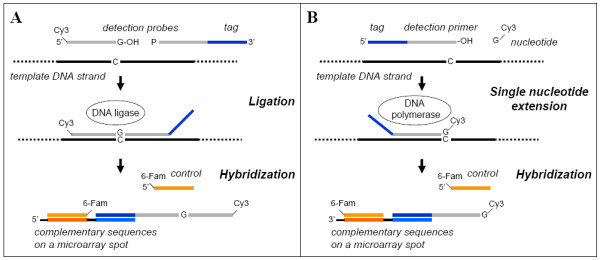Figure 1.

Principle of ligation detection and minisequencing reactions. A) Two ssDNA probes with one carrying a 5' fluorescent label and the other having a 5' phosphorylation and a 3' flanking tag sequence hybridize adjacently on target DNA. DNA ligase accepts nicked dsDNA strand as a substrate and joins the probes together if there is a perfect match to the template at the 3' end of the probe. B) Minisequencing is a similar approach using a detection primer and single dideoxynucleotide extension catalysed by DNA polymerase. The tag is in the 5' end of the primer and the nucleotide carries a fluorescent label incorporated into the 3' end. The reaction products are hybridized onto a microarray with complementary tag sequences. Each spot also harbors a complementary sequence to a 5' fluorescently labeled control probe which is read on another wavelength channel.
